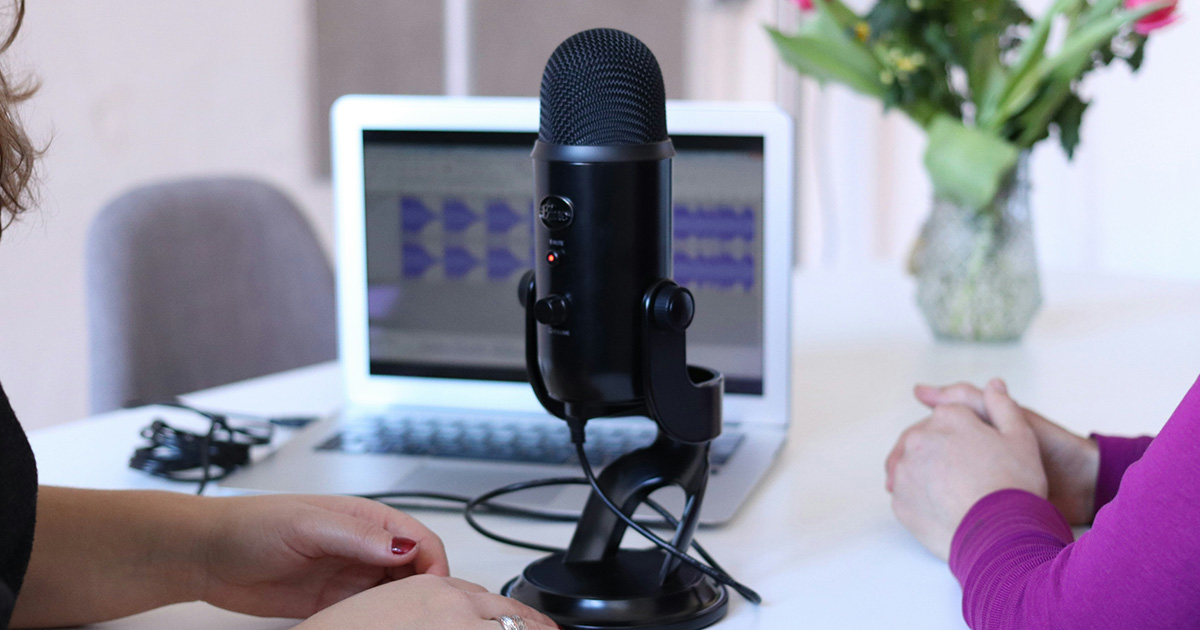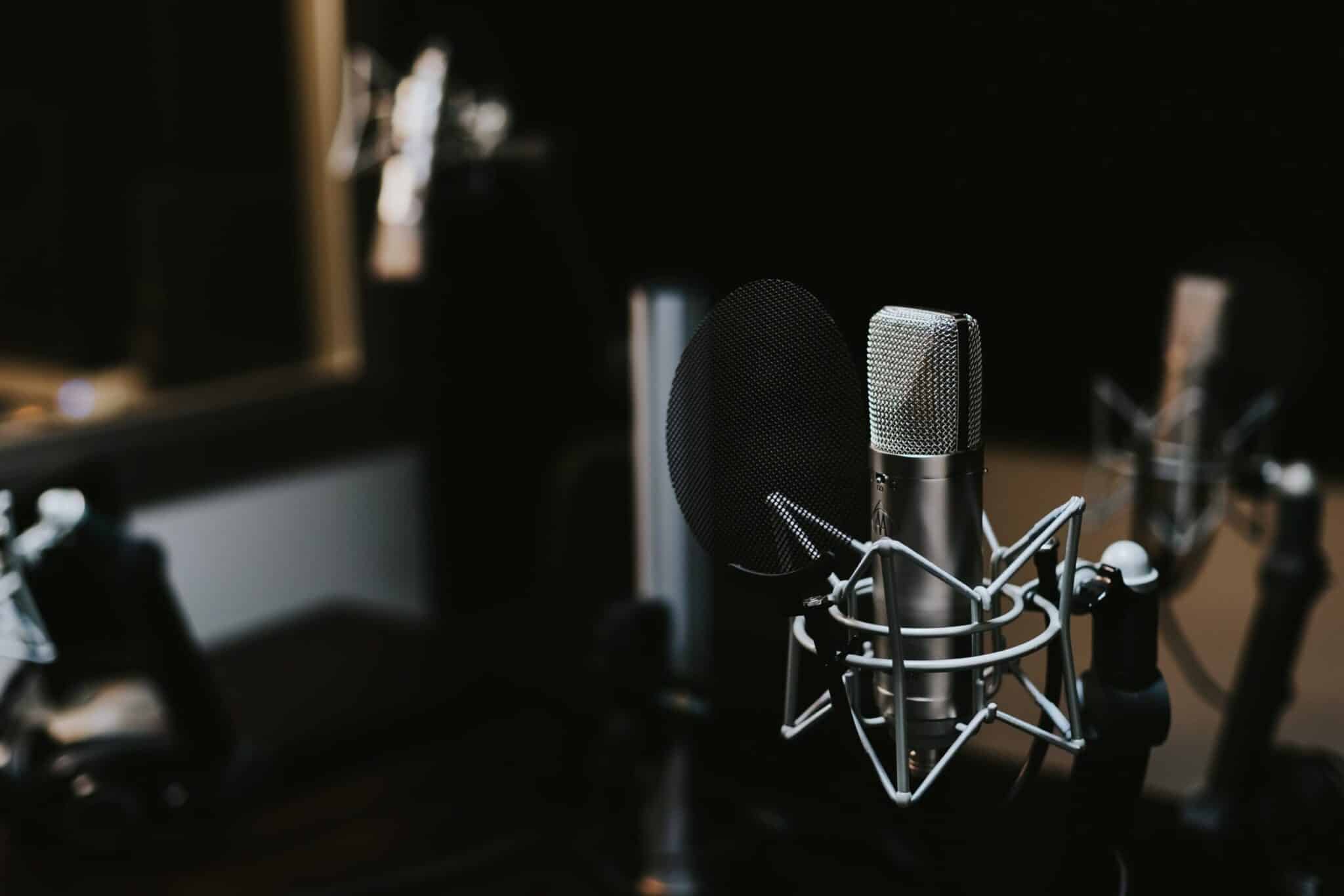Summary
Starting a podcast checklist to help you begin with confidence. Step-by-step guide to creating a successful podcast from scratch. Perfect for professionals!
Table of Contents
Introduction
I first got into podcasting when I began in full-time ministry and read an article on how to extend the life of your sermons. From that, I decided to podcast my sermons in audio format. In autumn 2019, I upgraded that podcast to a video podcast.
Then, the COVID-19 pandemic hit, and suddenly I was thrust into producing online worship on a weekly basis, and learned so much about how to publish audio and video content.
At the beginning of 2021, I added an audio daily devotional podcast that has covered Monday through Friday every week for the past three years and counting.
In the tapestry of today’s digital narratives, podcasting stands out as a vibrant thread, weaving together voices from around the globe into a rich mosaic of stories. Whether you’re a professional seeking an innovative outlet for your expertise, or someone journeying towards personal growth and seeking to share their discoveries, starting a podcast can be a path to unforeseen adventures and insights. Yet, as with any voyage, it’s wise to pack carefully. I invite you to consider this checklist not just as a list of tasks, but as a map to charting your unique podcasting journey.

Reflecting on Purpose and Passion
Before you dive into the world of podcasting, it’s essential to take a moment to contemplate your true north. Why are you starting this podcast? This reflection is more profound than it might appear at first glance. As Steve Jobs once mentioned, “The only way to do great work is to love what you do.” Your podcast topic should not only resonate with your audience but ignite your passion as well. If you’re passionate about your topic, it will act as a beacon during times of challenge or fatigue, lighting the way forward.
Understanding Your Audience
In an ocean of content, understanding who you’re speaking to is akin to setting the sails in the right direction. With over half of the U.S. population having listened to a podcast, according to Podcast Insights, and growing global audiences, it’s clear that podcasts have a broad and diverse listenership. Yet, each podcast speaks to a particular audience. Take time to research and understand your audience’s interests, challenges, and desires. This effort can illuminate the path to creating content that truly resonates and connects.
Crafting Your Narrative and Brand
Every podcast, like every book or film, tells a story. The name and branding of your podcast are the cover of your book, the poster of your film. They’re what make someone stop and consider your podcast among the multitude of voices. Think of your podcast name, logo, and theme music as the first impression—make it count. Reflect on brands and narratives that inspire you. What is their essence? Seek to infuse your podcast with a distinctive character that embodies your message and resonates with your audience.
You will need to create your podcast artwork. To comply with Apple Podcasts’ requirements, your cover art should be 3000 x 3000 pixels, with a resolution of 72 dpi. The file should be a PNG or JPG file, and colourspace should be RGB.
You can use a number of tools to produce your podcast artwork. Canva and Adobe Photoshop are two that I use to produce artwork.

Choosing the Right Tools
The brush and palette to a painter, the instrument to a musician, so is the microphone and recording software to a podcaster. The technology you choose does not have to be the most expensive, but it should be the right fit for you. Quality matters, as it respects your voice and the time your listeners invest. A myriad of resources online offer insights into the best equipment and software for various budgets (SoundGuys is a great place to start). Remember, clarity in sound mirrors clarity in thought.
Equipment is the heart of your podcast operation, and the key on any starting a podcast checklist. A good quality microphone is the utmost necessity. Blue Yeti and Audio-Technica ATR2100-USB are two of many high-quality microphones on the market. Other cheaper models are available, but may not produce the high quality sound you need for your podcast to sound professional. My current mic is the Neumann TLM 103, an excellent microphone that always produces good sound.
The Neumann TLM 103 is an XLR mic, which means it needs an interface or mixer between the mic and your computer. I currently use a Scarlett Solo interface for my microphone. If your podcast is going to be two- or more-handed, then you will need a larger interface. For example, for a two mics, you would need the Scarlett 2i2. Whilst this produces better sound, it is more expensive. For beginners, USB mics that plug directly into your computer can suffice.
Bear in mind, a pop filter to reduce plosive sounds should accompany your microphone setup.
Equally crucial are headphones that deliver clear sound, robust comfort, and great durability for the time you will spend editing your podcast. Any headphones you have will probably do. In the past, I have used my Bose QuietComfort noise-cancelling headphones, and my Apple Airpods Max. But for a flatter, more natural sound to help edit my podcast, I currently use Sennheiser HD 660S2 headphones.
You will also require a stable internet connection and a computer with a dedicated recording software. Audacity is free, and I have used it to produce podcasts for over 10 years (I have been podcasting my sermons for that long!). As an Adobe subscriber, I now use Adobe Audition. Both can be tailored to your skills and requirements.
Podcast recording is a technical art where clarity trumps over perfection. A quiet location will minimise background noise and increase overall audio quality. Always perform a sound check before starting to iron out any potential hitches.
To reduce the amount of time in editing, I have invested in the dbx 286s mic preamp/processor. This allows me to set some of the tools used in editing “live”, such as a compressor, de-esser, and expander/gate, so that I don’t have to spend time deploying them during the editing stage. It is, of course, cheaper to do it at the editing stage, but it does take more time.
Resist the urge to sound overly professional; instead, strike a conversational tone that personifies authenticity. This authenticity builds credibility and rapport with the audience, an absolute necessity on the starting a podcast checklist.

Nurturing and Growing Your Garden
Finally, imagine your podcast as a garden. You’ve planted the seeds with your content. Now, how will you help it grow? Promotion and engagement are the sunlight and water of your podcast garden. From social media to podcast directories like Apple Podcasts and Spotify, there are many ways to nurture and expand your audience. Consider collaborations with fellow podcasters—think of it as cross-pollination, where sharing audiences can enrich both your gardens.
It’s relatively easy to submit your podcast to the major podcast services such as Apple Podcasts, Google Podcasts, and Spotify, and some of the hosting providers listed above will take you through or automate each step for you.
Regular posting of engaging content on social media, running contests, guest podcasting, and partnering with influencers are effective ways to entice listeners to your podcast.
Conclusion
At the heart of this journey is not the destination but the transformation it brings within you and those who join your voyage. Podcasting is a medium of exploration, connection, and, most importantly, sharing. It’s a bridge between diverse perspectives, a way to learn from each other and grow together. As you embark on this podcasting journey, remember that your unique voice is a gift to the world. Trust it, nurture it, and let it soar.
Source Links
May your podcasting journey be filled with growth, discovery, and connections that uplift not just you but those who tune in to your voice.
Key Takeaways
1. Creating a roadmap to your podcast journey is vital, with a “starting a podcast checklist” serving as a trustworthy guide to navigate the somewhat tumultuous waters of podcast beginnings.
2. Podcasting involves multiple intricate steps such as idea generation, equipment selection or scriptwriting. A thorough “starting a podcast checklist” can ensure you cover all bases for a successful launch.
3. “Starting a podcast checklist” is a blueprint for both beginners and advanced podcast creators, helping streamline your thoughts into actionable steps and prioritising essentials, thus removing the guesswork.
4. Remember to stick to the steps in your “starting a podcast checklist” to maintain consistency, avoid overlap and ensure you don’t sidestep any vital aspects of starting your podcast.
5. Making use of a professionally-crafted “starting a podcast checklist” can allow you to avoid rookie mistakes, save valuable time and assure your journey kicks off on the right note.
Frequently Asked Questions – FAQ
What is a starting a podcast checklist?
A starting a podcast checklist is a comprehensive guide that outlines the essential steps and considerations for building a successful podcast from scratch. It provides a structured approach to help you navigate through the process of launching your podcast.
What are some key items to include in a starting a podcast checklist?
In a starting a podcast checklist, you should consider including key items such as defining your podcast concept, selecting the right podcast format, choosing suitable recording equipment and software, outlining episode topics, creating artwork and branding, setting up hosting and distribution platforms, planning promotional strategies, and ensuring compliance with podcasting guidelines and copyright laws.
How can I ensure my podcast is discoverable by search engines?
To make your podcast discoverable by search engines, it’s important to optimize your podcast’s metadata. This includes using relevant keywords in your podcast title, description, and episode titles. Additionally, adding transcripts or show notes to your episodes can also enhance search engine visibility.
What are some recommended podcast hosting platforms?
There are several popular podcast hosting platforms available, including Libsyn, Podbean, Buzzsprout, and Castos. These platforms provide the necessary infrastructure to upload, store, and distribute your podcast episodes to various podcast directories and platforms.
How can I increase the chances of my podcast appearing as a rich result in search engine results pages (SERPs)?
To increase the chances of your podcast appearing as a rich result in SERPs, ensure you have a well-structured podcast website that includes relevant schema markup. Provide clear and concise information about your podcast, including episode descriptions and timestamps. Additionally, encouraging listeners to leave reviews and ratings can also positively impact your podcast’s visibility in search results.
Related Links
- Discover How AI Can Enhance Your Pastoral Workflow!
- My Number 1 Sure Fire Rule That Will Make a Church Meeting Effective
- Becoming a Salvation Army Soldier: Do You See Exclusive or Inclusive?
- How to Take a Sabbath: The Best Way to be Ready
- Life as a Pastor: How Can We Cultivate Resilience in Ourselves and Others?
Please Consider Leaving Your Feedback
Did you know you can now give each post and podcast episode on my website a star rating?
I value your feedback about what I am writing and teaching, so I can improve and try to give you content that will better nourish, challenge, and equip you for your Christian journey.
All you have to do is click on the star rating below.
Thank you!






